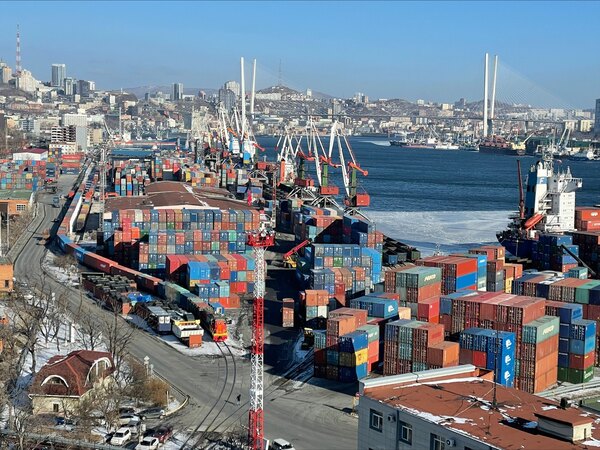
Report on a Business Trip to Vladivostok, Russia (Part 2): Problems with Exporting to Russia and the Future
Hello, I am Ichiki of Sync Logistics.
Continuing from last week, I’d like to share with you a report on my business trip to Russia last January 16 to 23.
■ Problems with exporting to Russia
The main reason I visited the port of Vladivostok during this trip was to
1.) visit the local branches of exporters, and
2.) visit shipping companies that provide Russia-related services.
To create services that solve various problems that come with exporting to Russia, the largest bottlenecks must first be identified. Our company uses constraint theory as a guideline in building our logistics services.
Originally, this theory maximizes a business’s cash flow by identifying bottlenecks (processes with the least amount of throughput compared to other processes) in the supply chain (which includes procurement, manufacturing, inventory management, delivery, and consumption). By continuing to improve bottlenecks, the whole business can move forward.
As in the case with Russia-related exports, we think of various measures when various problems arise. For example, measures can include renting a new yard at Toyama Port, chartering a new ship, or establishing a new company in Russia to create high-quality services. In this instance, it is important to identify bottlenecks first, and then implement measures in order of increasing constraint.
Let’s say a problem arises where automobiles cannot be continually purchased because there are frequent restrictions at the import yard. Expanding the yard is an option, but even if the yard is expanded and the problem is occurring when there are enough shipping orders, are there enough resources to go through customs clearance? Is there enough space on the ship? Are photos of automobiles for sale being promptly taken and shared with customers? These are some of the issues that need to be identified. By improving the areas with the lowest number of processing requirements per unit of time, overall logistics will improve.
■ Challenges in building services
During this trip, the biggest bottleneck in exporting to Russia that we identified was that the space for unloading cars in the port of Vladivostok has been decreased.
If the size of the space was 100% two years ago, the available space is about 70% today.
With freight rates for ships increasing sharply, the port of Vladivostok has shifted to a policy of prioritizing container cargo from South Korea and China. Unless you have a multi-story parking lot, only flat land can be used for automobiles, but if you have containers that can be stacked atop each other, land can be used in a three-dimensional way.
Moreover, actively attracting container cargo will increase logistics that can be used in various industries, which will contribute to the stimulation of the medium to long term economy.
Furthermore, it seems that the Chinese automobile manufacturer Chery is already planning to collectively lease land to enhance their sales to Russia, which may make it harder to send out used Japanese automobiles.
As a company that advocates for the maximization of the number of automobiles exported from Japan, we need to create services that can adapt to these situations.
■ Regarding the future
We are now creating a service that maximizes the use of existing unloading space, and we are also working on a plan for expanding unloading space at the Russian side.
The service is scheduled to launch in spring; and will introduce this service to our other customers whom we are supporting in due time. If any of our partner companies in Japan have Russia-related ideas for collaboration, we would be grateful if you will contact our staff.
Thank you for your time.






